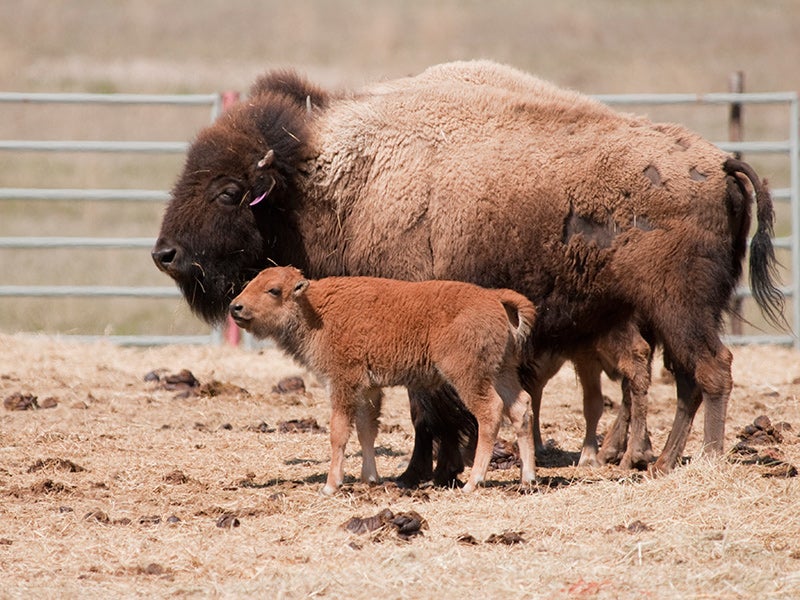More Wild Bison Return Home To Montana
Some extra thunder rumbled into north central Montana, when wild bison finally set hooves on the ground at Fort Belknap Indian Reservation. The return was the culmination of legal efforts to restore the animals to their historic prairie habitat. Members of the Assiniboine and Gros Ventre tribes were eager to receive them.

This page was published 12 years ago. Find the latest on Earthjustice’s work.
Some extra thunder rumbled into north central Montana this week when wild bison finally set hooves on the ground at Fort Belknap Indian Reservation. The return was the culmination of legal efforts to restore the animals to their historic prairie habitat. Members of the Assiniboine and Gros Ventre tribes were eager to receive them.
Montana’s Supreme Court recently cleared the way for the return—thanks in large part to Earthjustice legal efforts—rejecting challenges to a new state policy allowing wild bison room to roam outside the northern boundary of Yellowstone National Park. Said Earthjustice attorney Tim Preso:
The return of wild bison to the plains of northern Montana offers us a vision of the way things used to be—and also the way things can be in the future if we act boldly to restore native wildlife in appropriate places. That’s why we fought all the way to the Montana Supreme Court to help make it happen.
Two lawsuits filed in May 2011 by the Park County Stockgrowers Association, Montana Farm Bureau Federation and Park County, Montana, sought to block the new policy and require state officials to bar bison from the winter grazing habitat they need to survive.
Preso defended the bison policy in the case on behalf of the Bear Creek Council, Greater Yellowstone Coalition and Natural Resources Defense Council.
Federal and state agencies responsible for managing bison around Yellowstone National Park decided in 2012 to allow bison access to important winter and early spring habitat outside the north boundary of the park in the Gardiner Basin area until May 1 of each year. Their decision opened up critical foraging lands during a period when higher elevations in the park still lack spring grasses for bison and other grazing animals.
The bison species was driven to the brink of extinction by commercial hunters and mass slaughter in the 19th century. Millions once roamed the grasslands of America, shaping the ecology of the Great Plains, but were hunted down to a herd of 25 before emergency efforts for their survival kicked in.
Today, the bison numbers are growing again both in captivity and in the wild. Some 4,000 ranches raise hundreds of thousands of bison. But it is the much rarer, wild, free-roaming bison that scored a victory this summer. They are allowed once again to share some of the tribal lands on the North American plains with Native Americans after decades of being confined to Yellowstone National Park.
Established in 1993, Earthjustice's Northern Rockies Office, located in Bozeman, Mont., protects the region's irreplaceable natural resources by safeguarding sensitive wildlife species and their habitats and challenging harmful coal and industrial gas developments.